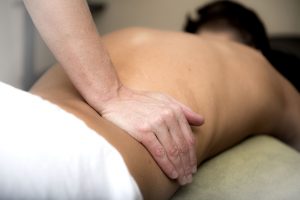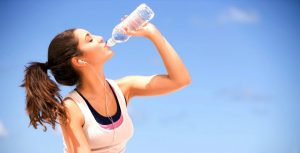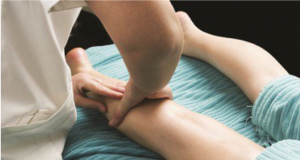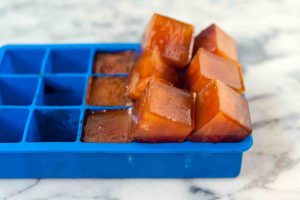When Is It Tendinitis?
Tendinitis is one of the most common diagnoses for soft tissue pain resulting from repetitive motion. As repetitive motion disorders have dramatically increased, so has the incidence of tendinitis.
However, recent investigations into the cellular nature of tendon pathologies have brought forth interesting discoveries that may alter the way tendinitis is treated. In this month’s column, let’s take a look at some of these fascinating discoveries.
The first stop along the way is to take a closer look at the anatomical and biomechanical characteristics of tendons. Tendons are connective tissue structures that are primarily composed of collagen and elastin fibers. Collagen fibers primarily give the tendon its strength, and elastin fibers give it a small amount of flexibility.
Since the tendon fibers are primarily designed to transmit a strong tensile (pulling) load from the muscle directly to the bone, the tendon is not designed to be very flexible. If it were very flexible, much of the muscle’s contraction force would be absorbed by the tendon and not transmitted to the bone. It would be like trying to pull a heavy object across the floor with a bungee cord instead of a rope.
The tendon gets its strength not only from the quantity of collagen fibers it contains, but also from the arrangement of the fibers. In tendons, the collagen fibers are arranged mostly in a parallel direction, in line with the direction of the muscle fibers. This arrangement will give the tendon the greatest amount of strength in the direction that the muscle fibers are pulling. Ligaments, on the other hand, have a greater quantity of elastin. In ligaments, the collagen fibers are arranged in a slightly more random fashion to give the ligament strength against forces in several different directions.
Tendons throughout the body are surrounded by a thin connective tissue membrane called the paratenon. The paratenon is primarily designed to reduce friction forces between the tendon and other surrounding structures.7
Tendons in areas such as the distal extremities are exposed to much higher friction forces, as the tendons bend around the joints and are held closely by retinacula. These tendons are surrounded by an additional connective tissue layer called the epitenon. The epitenon is commonly referred to as the tendon sheath. Keep in mind that not all tendons have the tendon sheath, only those exposed to specifically high friction forces against adjacent structures, like a binding retinaculum. In some instances, an inflammatory condition will develop between the tendon and its sheath. This usually occurs from excessive friction. Adhesions may also develop between the tendon and the sheath. This condition is called tenosynovitis. However, in order for tenosynovitis to be present, the tendon in question must have an epitenon (sheath).
In some instances a diagnosis of tenosynovitis may be made because of an observed fibrous adhesion between the tendon and the paratenon but there is no tendon sheath. This happens commonly with the Achilles tendon.3 It does not have a synovial sheath (epitenon) but its paratenon is quite visible. Degeneration or adhesion of the paratenon or tendon fibers in this instance is not tenosynovitis. For many years, the term tendinitis has been used to describe painful overuse conditions of the tendon. It has been thought that the pathology involved the tearing of individual tendon fibers and a subsequent inflammatory response in the tendon. Treatment, therefore, has focused on the inflammatory nature of the problem. However, a number of recent scientific investigations into the nature of overuse tendon injuries have painted a very different picture.1,2,5,6
In these investigations, most tendinitis complaints have been found to be devoid of inflammatory cells. It appears that tendon fiber tearing is not the primary part of the problem. The main problem in these overuse tendon disorders appears to be collagen degeneration from overuse. It has also been suggested that this would explain the frequent lack of success in treating tendinitis complaints with anti-inflammatory medication. Numerous authors and clinicians have suggested that the term “tendinosis” (literally meaning “pathology of the tendon”) is a much more appropriate term than “tendonitis,” which specifically indicates inflammation.
So what does this mean for the treatment of tendinitis with massage? The good news is that these findings are an even stronger support for the benefits of massage for treating these overuse tendon injuries. Collagen degeneration is a primary part of most tendinosis pathology. Therefore, what is needed is a treatment that can help stimulate collagen production in the healing process.
Interestingly, several recent studies have found that the primary benefits of deep friction massage may be the stimulation of collagen production in damaged tendon fibers, rather than the breaking up of fibrous scar tissue in chronically inflamed tendons as previously thought.4 We have known clinically for years that massage works well in the treatment of tendinosis; now we may be closer to understanding why.
References:
- Almekinders, L. C. and J. D. Temple. Etiology, diagnosis, and treatment of tendinitis – an analysis of the literature. Med Sci Sport Exercise. 30:1183-1190, 1998.
- Astrom, M. and A. Rausing. Chronic Achilles tendinopathy. A survey of surgical and histopathologic findings. Clin Orthop:151-164, 1995.
- Cailliet, R. Foot and Ankle Pain. 2nd ed. Philadelphia: F.A. Davis Company, 1983.
- Gehlsen, G. M., L. R. Ganion, and R. Helfst. Fibroblast responses to variation in soft tissue mobilization pressure. Med Sci Sport Exercise. 31:531-535, 1999.
- Khan, K. M., J. L. Cook, F. Bonar, P. Harcourt, and M. Astrom. Histopathology of common tendinopathies – Update and implications for clinical management. Sport Med. 27:393-408, 1999.
- Khan, K. M., J. L. Cook, J. E. Taunton, and F. Bonar. Overuse tendinosis, not tendinitis – Part 1: A new paradigm for a difficult clinical problem. Physician Sportsmed. 28:38+, 2000.
- Nordin, M. and V. Frankel. Basic Biomechanics of the Musculoskeletal System. 2nd ed. Malvern: Lea & Febiger, 1989.
Ready to #feelbetter?
You're just a click away from a wicked good massage!
-

60 Minute Massage Gift Card
$170.00 Add to cart -

90 Minute Massage Gift Card
$255.00 Add to cart -

Mini Aer Small Room Air Purifier
$149.00 Add to cart -
Sale!

Thera-Pearl Sports Pack/Hot Cold
Original price was: $14.99.$12.99Current price is: $12.99. Add to cart -

3 Somadome Sessions Gift Card
$135.00 Add to cart -

20 Minute Somadome Gift Card
$45.00 Add to cart -
Sale!

TheraBand® Stretch Strap
Original price was: $19.99.$14.99Current price is: $14.99. Add to cart -

TheraBand CLX Connective Loop
$14.99 Select options
Energy Boosters
Energy Boosters Ways to Get You Through the Day No amount of coaxing, pleading, or pedal pumping could get the engine in the rental car to turn over. It was going nowhere. The travelers had filled the car with unleaded fuel, but it had a diesel engine. It had been able to run a little…
Read MoreWhat is Qi?
What is Qi? A fundamental concept of traditional Chinese medicine (TCM) dating back over 3,000 years, qi (pronounced “chee”) is the Chinese word for energy, which also carries with it connotations of “air,” “breath,” and “life force.” In TCM, it is understood that everything from humans and animals to rocks and trees is filled with…
Read MoreWhy Buy Organic?
Why Buy Organic? Is the Higher Price Worth It? While shopping in your grocery store’s produce section, you may notice the organically grown apples are pocked and not as big and perfectly round as the conventional produce, but they are more expensive. What’s the difference, and which do you choose? Your decision may significantly impact…
Read MoreAre You Making the Most of Your Massage?
Are You Making the Most of Your Massage? How to Prolong the Benefits of Bodywork A massage works in wonderful ways, easing stress and pain, calming the nervous system, increasing circulation, loosening tight muscles, stimulating internal organs, and enhancing skin. The multiplicity of physiological responses sends a simple, clear message to the mind: Massage feels…
Read MoreThe Case for Chocolate
The Case for Chocolate New Studies Show Health Benefits It’s not like we need a specific reason to eat chocolate, but it doesn’t hurt that studies are finding increasing health benefits associated with the popular indulgence. While chocolate is high in sugar and saturated fat, it does contain chemical compounds with proven benefits, so enjoy–in…
Read MoreThe Wonders of Water
The Wonders of Water For Skin Health and More Shelley Burns, N.D. Creams, nutritional supplements, treatments, lotions, and potions. We are always looking for the next miracle product to keep skin looking healthy and young. However, there is one essential, inexpensive, and often overlooked nutrient right at your fingertips:water. Just as a car cannot function…
Read MoreInvest In Your Health
Invest in Your Health Massage Offers Excellent Return onInvestment “Invest for the long term” is great financial advice, but it’s also great healthcare advice. Never is investing for the long term more important than when you are making day-to-day decisions about your health. There are short-term gains from taking care of your health, to be…
Read MoreLife Hack: Iced Cubes
Life Hack: Coffee Cubes (Redux) As usual in New England, we have gone from Winter to Summer, with Spring being an absentee season (again). Since it feels like Summer is already here, I thought it best to give you a Life Hack that is an oldy, but a goody! Iced Coffee…..CUBES! #mindblown Yes. I have offered this…
Read MoreMake a Great Save to Avoid Back Pain
Make a Great Save to Avoid Back Pain 7- Stretches in 7-Minutes I was speaking the other day with one of our therapists and we were discussing our role in helping our patients. I was explaining that a comment I often tell new patients is; “These are hands, not magic wands”. Patients often seek out…
Read MoreTime for Sleep
Time for Sleep As a nation, we may be divided, but there is one common bond that unites us all around the world; sleep. We all need sleep in order to be capable of performing every day tasks. Sleep is an imperative part of the human experience. Without a good night’s sleep, our bodies will slowly…
Read More









